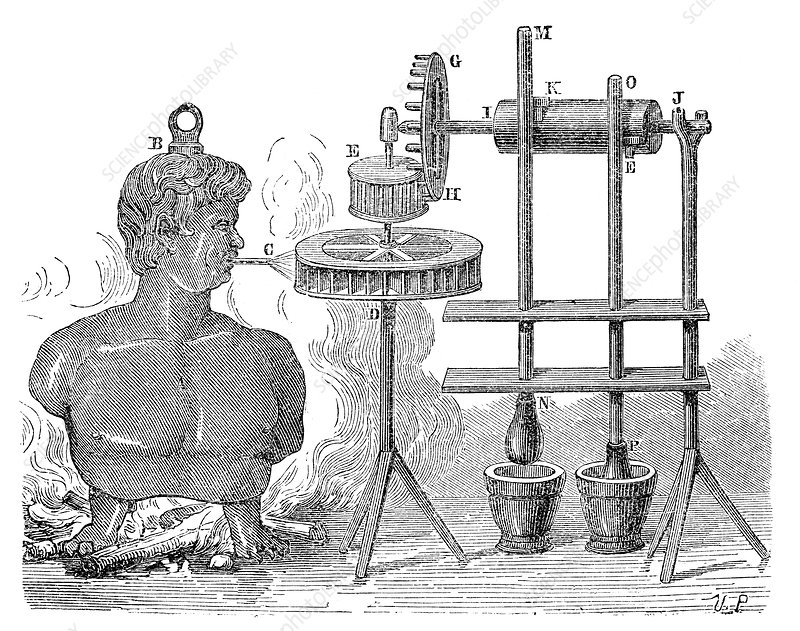1960 AD TO 1980 AD
Mechanical engineering inventions between the time 1960 to 1980s
Introduction
The 1960s were a decade of significant change in engineering. Mechanical engineers invented many new technologies and made breakthroughs in fields like robotics, computerized design and manufacturing (CAD), and mechanical systems engineering.
The first computerized programmable logic controller (PLC) was introduced in the 1960s by the General Electric Company.
PLCs were used for automation in manufacturing and process control systems, but they also had other uses in industrial robotics and robotics.
Computer numerical control (CNC) machines were first developed to produce high-precision components in aerospace and mechanical engineering applications during the 1960s and beyond.
The CNC machine uses computer software to control the movement of a machine tool. The operator inputs command into a computer or other device that controls the speed, direction, power output, and feedstock input on an industrial robot arm. This allows for greater precision than manual machining operations can achieve with conventional lathes or milling machines because CNC systems have much greater accuracy than humans could reach on their own (or even with help from others).
CNC systems are used in many industries, including automotive manufacturing; aerospace industry; medical devices such as heart valves replacements; electronics assembly lines such as those used by Apple Inc.; textiles production line at DuPont Chemicals Plant Wilmington, Delaware USA
Programmable Logic Controllers (PLCs) were used to automate manufacturing and process control systems.
Programmable Logic Controllers (PLCs) are used to automate manufacturing and process control systems. They control automated machinery, industrial robots, and industrial automation systems. PLCs can be programmed to perform a specific task at any time of the day or night.
Robotic assembly lines were first used in automobile engine production at General Motors' Cleveland Engine Plant in 1966 and Ford Motor Company's Dearborn Assembly Plant in 1970.
The first use of robots in manufacturing was at General Motors' Cleveland Engine Plant in 1966 and Ford Motor Company's Dearborn Assembly Plant in 1970. These plants could produce more engines per hour than their human counterparts, but they did not have the same efficiency as automated lines found later on.
The first industrial robots used by automobile manufacturers were mechanical arms that moved parts around a machine shop floor or assembly line. These mechanical arms could lift heavy components such as transmissions or engines and place them into place so workers could attach them to other parts on an assembly line.
Three-dimensional computer-aided design (CAD) became a standard tool for engineering professionals during the mid-1960s, allowing them to view detailed virtual models of complex geometries and structures directly on their workstations.
Three-dimensional (3D) computer-aided design (CAD) is a type of two-dimensional computer graphics in which the user can manipulate 3D models using a mouse or other pointing device. These models may be visualized using color, lighting, and shading techniques. The user can view their creation from any angle, allowing for accurate measurements without relying on physical measures or guesswork about an object's size or shape.
CAD software allows engineers to create virtual models of objects such as aircraft parts, robots, and buildings that can then be used directly in manufacturing plants around the world so that real-world products are produced with precision and accuracy at a low cost per unit production cost per item made.
At the same time, computers became much more powerful and affordable, allowing engineers to create complex geometries that previously required expensive fabrication tools such as CNC milling machines or lathes finished with hand finishing processes.
By the mid-1960s, computers became much more powerful and affordable, allowing engineers to create complex geometries that previously required expensive fabrication tools such as CNC milling machines or lathes finished off with hand finishing processes.
At the same time, CAD software became a standard tool for engineering professionals during this period (the mid-1960s), allowing them to view detailed virtual models of complex designs directly on their workstations. This allowed engineers working at different locations worldwide to communicate with each other via email or teleconference calls when discussing design issues or making decisions about materials selection.
Conclusion
When a majority of advances in the engineering field have been carried out by engineers, inevitably, the rest of society has also benefitted from their research. This led to an increase in demand for engineers and, thus, in engineering graduates.
The value of engineering education is higher than ever before. This is primarily because in the 21st century, there has been a significant shift towards computing, with the United Nations stating that at least half of all jobs will require some form of computer or computational skills by 2015. The need for computer scientists and mathematicians has also increased, with a UN report stating that around 80% of jobs will require those skills by 2018.
Furthermore, a large proportion of those who graduate with Engineering degrees is employed within manufacturing industries which require control systems over automated processes. In particular, Transport and Utility vehicle manufacturers collectively employ around one million engineers and technicians each year. Computer hardware manufacturing employs over 1 million people per annum and employs software developers, designers, and testers, increasing demand for graduates in these fields. Other industries include Financial services; Architecture; Retail; Healthcare; Biotechnology; Information Technology (IT) services; Communications & Media; Defence / Aerospace; Energy; Manufacturing; Utilities; Transportation & Logistics; Construction & Infrastructure.






Comments
Post a Comment